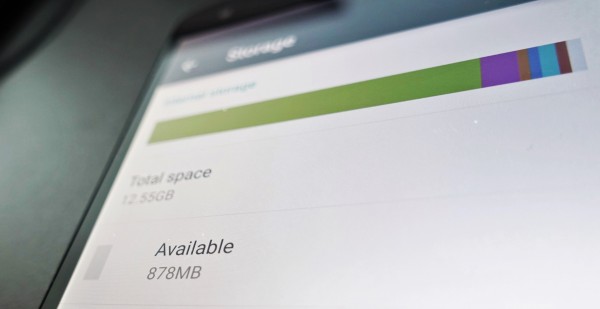Tell Tale Tech: Storage Shortages
March 9, 2015
Even though storage is inexpensive, manufacturers are becoming quite cheap in the way they make their products. As a case in point, take a look at any one of your personal devices. You will find, in most cases, that the actual storage capacity is far less than what was originally promised. How kind of them.
There’s a huge difference between the stated capacity of a device and the space that is actually usable. For example, that 16GB you originally planned on having, could be cut down to a much less appealing 12GB even before you unbox your new device. And while this may not seem all that significant, it’s the equivalent of roughly 800 photos or around 1,000 songs. It’s always an unfortunate shock, but look on the bright side. If you do pass out and your phone is out of storage, you still have a brand new phone to call emergency services.
For the most part, this lost space is occupied by the OS itself, which is certainly necessary to have on board. However, this should not come at the expense of storage for the end-user, as it is pretty much assumed that a device will come with the software it needs. This mostly affects smartphones though, given that their storage space is usually a fraction of what is available on most laptops and desktops.
There used to be workarounds for this problem, since most phones had expandable storage options, but this feature has since disappeared on most modern flagships, including Apple’s iPhone and Samsung’s Galaxy S6. Strangely, this has instead become a common feature in lower-end Android and Windows Phone devices. This is not out of the goodness of the manufacturer’s heart though. Instead, it is merely a way to justify the often paltry amounts of storage space they come with, usually in the range of 4GB.
The simple solution is just to get rid of things that take up space. And if you can, great. But when I look at what I currently have stored on my phone, there’s really nothing I can get rid of easily. For me, email and music take up the biggest chunk of system memory, and I’m not about to part with either one of those. Other people might cherish their photos or movies just as much. So for most of us, getting rid of things isn’t really a solution. I’m all for minimalism, but removing content that you regularly use defeats the purpose of having a phone in the first place.
And guess what? Even if you plan out your storage down to the very last megabyte, you will still run into issues. Device performance will undoubtedly suffer as your device nears its full storage capacity. In other words, that fluid and beautiful device you just bought could become a laggy mess quite quickly, depending on how much you have stored on it.
Yes, you could clear the stored memory on apps from within the settings menu, but that is only a temporary fix. Cached data is particularly crucial on smartphones, and is responsible for everything from storing login info to remembering in-app preferences. Besides, even if you did clear them, the same amount of memory will be taken up again as soon as you reenter them. It will work for apps and services you don’t use, but it’s best to leave everything you actually use untouched.
So what choice are we left with? Buy the device with double the storage? I’m really hesitant to recommend this, but sadly there is no other viable solution at this point, since most devices have integrated system memory that cannot be modified. Just make sure you have ample storage for whatever you are planning to do. It’ll save you from having to buy a new device entirely somewhere down the line.










